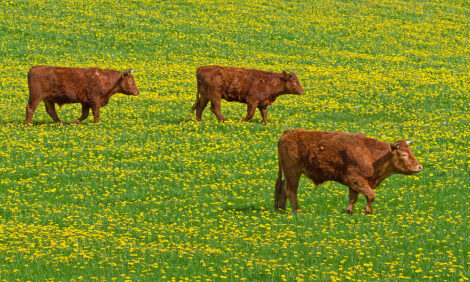



SDSU specialist: Managing spring grazing
US - Tight supplies for hay and by-product feeds and high-priced corn will have many ranchers eager to put cows out on grass as soon as possible this spring.Mousel said research from North Dakota suggests that grazing native range before the third leaf stage can reduce carrying capacity by up to 50 percent in some situations.
“The effects of early grazing on improved pastures are likely not as pronounced due to differences in management, climate, and level of agronomic inputs, but a reduction of 10 percent to 30 percent in carrying capacity is not out of the question,” Mousel said.
How early is too early for turnout if you’re worried about forage yield? Mousel said it depends on the type of vegetation you have available on your native range and in your pastures. Forage species such as crested wheatgrass typically green up a week to two weeks earlier than most other cool-season forage species.
“As I’ve already noted, grasses really need to develop to the third leaf stage before they are mature enough to stand up to grazing pressure. To avoid season-long reductions in forage yield, grazing managers should wait until crested wheatgrass reaches a height of 4 to 6 inches before turning cattle out,” Mousel said.
Similarly, managers should delay turnout on the taller statured species such as smooth bromegrass and intermediate wheatgrass until plants reach a height of about 8 inches.
Mousel noted that key forage species on native range (western wheatgrass, green needlegrass, etc.) typically take longer to develop to the third leaf stage than improved forage species. In most years, turnout on native range should be delayed until the heights of key forage species are at least 4 to 6 inches, which is typically near the end of May or first part of June.
Conversely, native, warm-season tallgrasses can benefit from some light early-season grazing. Research in east-central Nebraska has shown that grazing big bluestem at a light stocking rate in mid-May can improve utilization of forage later in the grazing season without reducing season-long forage yields.
However, managers should still wait for warm-season tallgrass species to reach the third leaf stage, or about 10 inches in plant height, before turning cattle out. In most years in South Dakota this would be about late-May to early June, Mousel said.
TheCattleSite News Desk


